Vous trouverez ci-dessous une sélection de ressources pour les livres d’images et de fiction relatifs à l’orientation sexuelle et à l’identité de genre. (SOGI).
Listed below are selected resources for picture books and fiction related to Sexual Orientation and Gender Identity (SOGI).
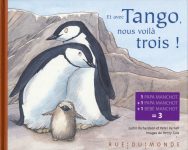 Et avec Tango, nous voilà trois!,
Et avec Tango, nous voilà trois!,
texte de Justin Richardson et Peter Parnell ; images de Henry Cole ; traduction de Laurana Serres-Giardi
Niveau scolaire (Grade level): Préscolaire – 3 (PreK-3)
Quelque chose d’exceptionnel est arrivé au zoo de Central Park. Un étonnant couple de manchots s’est formé dans l’enclos polaire. M. Gramzai, qui veille sur eux, a alors l’idée de leur fournir un oeuf fécondé qu’un autre couple de manchots ne pourront couver. Les deux mâles inséparables Roy et Silo, qui avaient déjà formé leur nid comme les autres, couvent alors ensemble cet oeuf abandonné. Se relayant et fournissant tout le nécessaire, l’oiseau naît et se développe normalement, et les deux papas assurent son bonheur avec autant de soin que leurs pairs hétérosexuels.
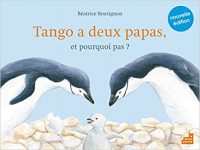 Tango a deux papas, et pourquoi pas?,
Tango a deux papas, et pourquoi pas?,
de Béatrice Boutignon
Niveau scolaire (Grade level): Préscolaire – 3 (PreK-3)
Marco aime observer les animaux du zoo de Central Park. Depuis quelque temps, un étonnant couple de manchots s’est formé dans l’enclos polaire. Deux mâles inséparables ont formé leur nid et couvent ensemble un oeuf abandonné. Se relayant et fournissant tout le nécessaire à l’oiseau, qui naît et se développe normalement, les deux papas assurent son bonheur avec autant de soin que leurs pairs.
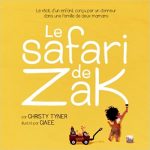
Le Safari de Zak : le récit d’un enfant conçu par un donneur dans une famille de deux mamans,
par Christy Tyner ; illustrations de Ciaee ; traduction de Nathalie Tremblay
Niveau scolaire (Grade level): Préscolaire – 1 (PreK-1)
Le safari de Zak est le récit d’un d’enfant conçu par un donneur dans une famille de deux mamans. Quand la pluie contrecarre le projet d’aventure en safari de Zak, celui-ci invite les lecteurs et lectrices à une visite très particulière de sa famille. Zak raconte comment ses parents se sont rencontrées et sont devenues amoureuses. Elles voulaient plus que tout avoir un enfant et ont décidé d’en concevoir un.
texte de Ariane Bertouille ; illustrations de Marie-Claude Favreau
Niveau scolaire (Grade level): Préscolaire – 2 (PreK-2)
Lorsque son oncle lui offre une souris, Ulysse est fou de joie! Or, avant d’adopter de façon définitive ce rongeur doté d’une voix de ténor qui n’est jamais à court d’idées de jeux, il devra d’abord la présenter à son chat Capsule ainsi qu’à ses deux mamans, qu’il devra de surcroît convaincre qu’il est assez grand pour prendre ses responsabilités.
de Todd Parr
Niveau scolaire (Grade level): Préscolaire – 1 (PreK-1)
“Dans la vie, on peut être adopté, on peut avoir de grandes oreilles, on peut être de couleurs différentes, avoir un nez pas comme tout le monde, on peut se mettre en colère, on peut arriver le dernier, on peut dire non si on se sent en danger.” Grâce à un texte simple et des illustrations qui captent son attention, Todd Parr livre à l’enfant un message positif et chaleureux sur ce qu’il est, et comment on perçoit les autres. Sans pour autant lui faire la morale.
de Kyo Maclear et Isabelle Arsenault ; traduction de Fanny Britt
Niveau scolaire (Grade level): Préscolaire – 2 (PreK-2)
“Sa maman est une cuillère. Son papa est une fourchette. Lui, il est un peu des deux. Voici Fourchon! Fourchon détonne. Dans sa cuisine, les cuillères sont des cuillères et les fourchettes sont des fourchettes. On ne se mêle pas aux autres. Il a beau tenter de passer pour une cuillère, puis pour une fourchette, Fourchon n’est jamais choisi lorsque vient le temps de se mettre à table. Il semble condamné à un destin de tiroir.
de
Niveau scolaire (Grade level): Préscolaire – 2 (PreK-2)
Un petit oiseau est recueilli par un couple de papas. L’oisillon grandit entouré de tendresse et de bienveillance. Lorsqu’il est en âge de rentrer à l’école, ses petits copains lui demandent pourquoi il a 2 papas.
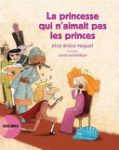 La princesse qui n’aimait pas les princes,
La princesse qui n’aimait pas les princes,
de Alice Brière-Haquet ; illustré par Lionel Larchevêque.
Niveau scolaire (Grade level): Préscolaire – 3 (PreK-3)
“Princes d’à côté, Venez! Accourez! Ma fille est à marier. Elle est jolie, douce et aimable et dort très bien sur des petits pois.” La princesse les vit donc arriver, ces princes d’à côté. En file sur le chemin, un à un, ils baisèrent sa main. Mais non, vraiment, merci bien, aucun d’entre eux ne lui disait rien!
texte et illustrations, Muriel Douru
Niveau scolaire (Grade level): Préscolaire – 2 (PreK-2)
Au royaume du Nénuphar précieux, le peuple grenouille est en ébullition. La princesse Cristelle doit se marier ! Mais Crioline va bouleverser les plans du roi Cristo et de la reinette Cristina.
texte de Nathalie Hense ; illustrations de Ilya Green
Niveau scolaire (Grade level): Kindergarten – 4
Une petite fille en a plus qu’assez du rose et elle refuse d’être enfermée dans des goûts qui ne sont pas les siens. Elle se compare à Carl, un petit garçon sensible qui peint des fleurs sur ses voitures. Un récit illustré d’images aux couleurs explosives.
de Jean-Christophe Mazurie
Niveau scolaire (Grade level): Kindergarten – 4
Tout le monde aime Philomène, mais elle… qui aime-t-elle ? Quand Philomène se balade à vélo, tous les garçons qu’elle croise sont inéluctablement à côté de la plaque ! Les frères Lasserre, pourtant des bagarreurs de première, décrètent une trève, Prosper Laguigne oublie son bombardon et toute l’équipe de foot se désintéresse du ballon ! Mais le coeur de Philomène, lui, ne bat pour aucun garçon… Il bat pour… pour qui ?
de Liz Prince ; traduction de Philippe Touboul
Niveau scolaire (Grade level): 7 – 12
Roman graphique mettant en lumière une réflexion sur le genre et la perception de la féminité dans la société, à travers la propre enfance de l’auteure et l’image de garçon manqué que lui renvoyait son entourage. Elle évoque les difficultés d’être jugée et les étapes de sa construction identitaire, au fur et à mesure de ses rencontres.
texte de Andrée Poulin ; illustrations de Marie Lafrance
Niveau scolaire (Grade level): Kindergarten – 3
Émile et Mathis sont les meilleurs amis du monde. Ils partagent leurs jeux. Leur collations. Et leurs secrets. Un beau matin, Émile fait une découverte dans le carré de sable. Ça lui donne une idée. La plus meilleure idée de toute sa vie. Sauf que certains trouvent que c’est plutôt la plus mauvaise idée de toute sa vie. Que fera Émile?
de Émilie Chazerand et Gaëlle Souppart
Niveau scolaire (Grade level): Préscolaire – 2 (PreK-2)
C’est une maladie d’avoir deux papas ?
N’importe quoi, dit Violette.
Mes papas, ils s’occupent trop bien de moi.
Je les aime tous les deux, et puis c’est tout.
de Elise Gravel
Niveau scolaire (Grade level): Kindergarten – 2
“À travers une amusante galerie de portraits d’enfants aux goûts, caractères, talents et ambitions variés, on interpelle le lecteur afin de lui montrer toute une série de façons de demeurer soi-même. Fille, ou garçon, il ou elle a tout à fait le droit d’être sensible, de faire du bruit, d’être un artiste, d’avoir peur, d’être en colère, de faire le ménage, d’être bizarre, d’être bon à l’école, etc. En fait, tout est permis… sauf bien sûr d’être méchant(e) ou malpoli(e)!”
 Anatole qui ne séchait jamais,
Anatole qui ne séchait jamais,
texte de Stéphanie Boulay ; illustrations de Agathe Bray-Bourret
Niveau scolaire (Grade level): Kindergarten – 4
“Anatole pleure constamment et, pour sa soeur Régine Bibeau, comme pour son père, la situation est devenue lourde au quotidien. Régine va commencer à utiliser toutes les ressources de son intelligence pour trouver l’origine des pleurs de son frère. Peu à peu, elle découvre que les stéréotypes sociaux de la masculinité font souffrir Anatole qui préférerait porter une jupe et s’amuser avec les pouliches de sa soeur.”
 Ciel,
Ciel,
de Sophie Labelle
Niveau scolaire (Grade level): 3 – 7
C’est le premier jour du secondaire pour Ciel, jeune ado transgenre. Mais cette étape ne se fait pas sans heurt pour elle, surtout qu’Eiríkur, son amoureux, a dû retourner en Islande, et qu’ils sont désormais forcés de poursuivre leur relation à distance. Pour se changer les idées, Ciel concentre toute son énergie à économiser l’argent nécessaire pour acheter la caméra de ses rêves et parfaire sa chaîne Youtube amateur, Ciel s’ennuie. C’est sans compter l’arrivée de Liam, un nouvel élève plutôt mystérieux (et champion de natation !)
de Molly Knox Ostertag
Niveau scolaire (Grade level): 3 – 7
Dans la culture du jeune Aster, treize ans, toutes les filles sont élevées pour devenir des sorcières et les garçons, des métamorphes. Toute personne qui ose contrevenir à cette tradition est exclue. Malheureusement pour Aster, il demeure incapable de se métamorphoser… et il est toujours aussi fasciné par la sorcellerie, bien qu’elle lui soit formellement interdite.
Lorsqu’un danger mystérieux menace les autres garçons, Aster sait qu’il peut aider… avec la sorcellerie. Avec les encouragements d’une nouvelle amie excentrique, Charlie, Aster se laisse enfin convaincre d’exercer ses talents de sorcière. Mais il aura besoin d’encore plus de courage pour sauver sa famille… et en réalité, se sauver lui-même.
de Cat Clarke ; traduit de l’anglais (Royaume-Uni) par Cécile Ardilly
Niveau scolaire (Grade level): 4 – 9
L’uniforme, oui ! La jupe, non ! Liberté, égalité, pantalon ! Liv (ne l’appelez pas Olivia, il déteste ça) sait depuis toujours qu’il est un garçon et non une fille, mais le règlement très strict de son collège en matière d’uniforme lui interdit de porter un pantalon. Il lui faudra donc porter des jupes. Commence alors l’Opération Pantalon. La seule manière pour Liv d’obtenir ce qu’il veut, c’est de mener la bataille lui-même. Et il ne compte pas seulement changer les règles : il veut changer sa vie, un combat loin d’être gagné d’avance !
 Assignée garçon: ambiance trans de feu,
Assignée garçon: ambiance trans de feu,
de Sophie Labelle
Niveau scolaire (Grade level): Kindergarten – 6
Cette bande dessinée tirée du webcomic à succès Assignée garçon met en scène Stéphie, une jeune fille transgenre qui navigue à travers sa première histoire d’amour, ses querelles avec ses camarades d’école et sa relation avec son père. Heureusement, Ciel est là pour la suivre dans ses mésaventures. Le duo apprend à se découvrir et à se célébrer tout en nous offrant des réflexions sur les réalités des personnes trans et queer.
de Daniel Haack; illustrations de Stevie Lewis; texte français d’Isabelle Allard.
Niveau scolaire (Grade level): Préscolaire – 2 (PreK-2)
Dans un royaume lointain, un prince s’apprête à monter sur le trône. Sachant qu’il vaut mieux régner à deux, ses parents sont déterminés à lui trouver une épouse aimable. Ils partent donc tous les trois afin de trouver une femme digne du futur souverain. Le prince fait la rencontre de plusieurs demoiselles, mais aucune d’entre elles ne lui plaît… Toutefois, en l’absence de la famille royale, le royaume fait face à une terrible menace : un immense dragon cracheur de feu s’en prend aux habitants et aux soldats, et ceux-ci prennent la fuite! Quand il apprend la nouvelle, le prince retourne aussitôt protéger son royaume… En chemin, il rencontre un courageux chevalier couvert d’une armure étincelante. Ensemble, ils combattent le dragon… et découvrent du même coup le vrai amour!
de Jessica Love; traduit de l’anglais par Sylvie Goyon
Niveau scolaire (Grade level): Préscolaire – 2 (PreK-2)
Le jour où Julian voit passer trois femmes magnifiques habillées en sirènes, sa vie change. Il ne rêve plus que d’une chose, devenir lui aussi une sirène. Mais que va penser sa Mamita?
Trouver d’autres ressources
Voici quelques conseils pour trouver d’autres ressources dans ce domaine :
- Sur la page principale du site de la bibliothèque de l’UBC, utilisez la boîte de recherche générale pour rechercher des matériaux à travers toutes les succursales de la bibliothèque de l’UBC.
- Pour limiter vos résultats aux matériels disponibles à la Bibliothèque de l’éducation, visitez le site web de la Bibliothèque de l’éducation et effectuez une recherche à l’aide de la case “Search Education Resources” située dans la bande à gauche de l’écran.
- Remarque : les ressources étant principalement cataloguées en anglais, les termes ci-dessous donnent généralement plus de résultats que les recherches effectuées en français. Vous pouvez filtrer votre liste de résultats par langue dans la barre latérale de gauche.
- Utilisez des termes de recherche spécifiques, tels que
- “gender identity in education”, “homosexuality and education”, LGBT, “sexual orientation”, ou “gender identity” AND “study and teaching”
- “sexual minorities” AND education
- Pour trouver des plans de cours, incluez “lesson plans”, “lesson planning”, or “activity programs” dans vos termes de recherche.
Finding More Resources
To find more resources in this area, try the following:
- Search using the General tab on the UBC Library website to look for material in all UBC Library branches.
- Search using “Search Education Resources” box in the left hand bar on the Education Library website to limit your results to physical materials in the Education Library.
- Use specific search terms, such as
- “gender identity in education”, “homosexuality and education”, LGBT, “sexual orientation”, or “gender identity” AND “study and teaching”
- “sexual minorities” AND education
- To find lesson plans, include “lesson plans”, “lesson planning”, or “activity programs” in your search terms.

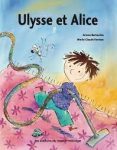
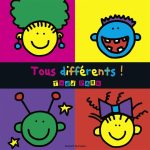
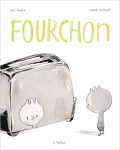
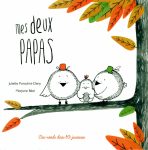

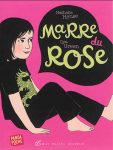
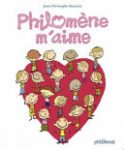

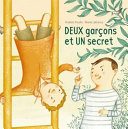
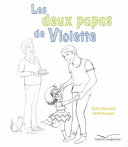



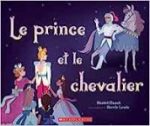
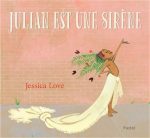


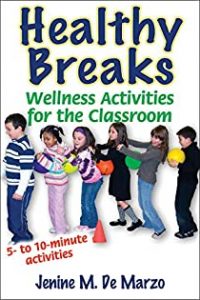
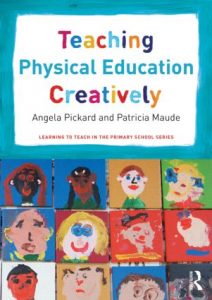 Teaching physical education creatively
Teaching physical education creatively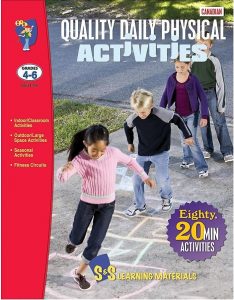 Canadian quality daily physical activities. Grades 4-6: 80 activities adapted for classroom & outside
Canadian quality daily physical activities. Grades 4-6: 80 activities adapted for classroom & outside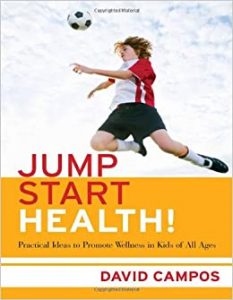
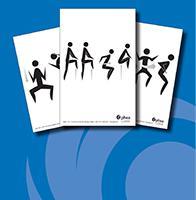 Ophea 50 fitness activity cards [Les 50 cartes d’activités physiques d’Ophea]
Ophea 50 fitness activity cards [Les 50 cartes d’activités physiques d’Ophea]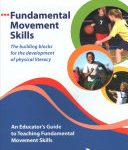
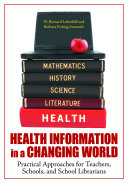 Health information in a changing world: Practical approaches for teachers, schools, and school librarians
Health information in a changing world: Practical approaches for teachers, schools, and school librarians A curriculum of wellness: Reconceptualizing physical education
A curriculum of wellness: Reconceptualizing physical education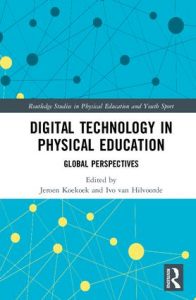 Digital technology in physical education: Global perspectives
Digital technology in physical education: Global perspectives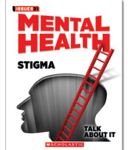
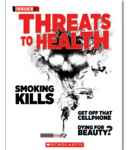
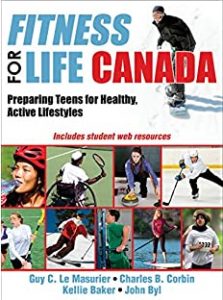 Fitness for life Canada: Preparing teens for healthy, active
Fitness for life Canada: Preparing teens for healthy, active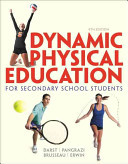 Dynamic physical education: For secondary school students
Dynamic physical education: For secondary school students
 Heartbeat of the Earth: a handbook on connecting children to nature through indigenous teachings
Heartbeat of the Earth: a handbook on connecting children to nature through indigenous teachings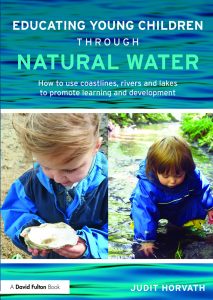 Educating young children through natural water: How to use coastlines, rivers and lakes to promote learning and development
Educating young children through natural water: How to use coastlines, rivers and lakes to promote learning and development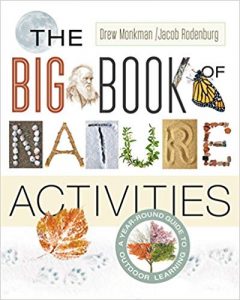 The big book of nature activities: A year-round guide to outdoor learning
The big book of nature activities: A year-round guide to outdoor learning

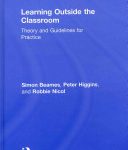

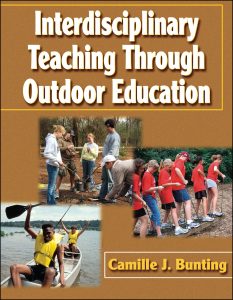

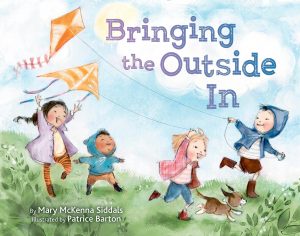 Bringing the outside in
Bringing the outside in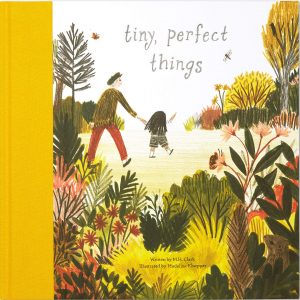 Tiny, perfect things
Tiny, perfect things Up in the garden and down in the dirt
Up in the garden and down in the dirt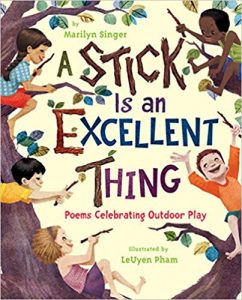 A stick is an excellent thing: Poems celebrating outdoor play
A stick is an excellent thing: Poems celebrating outdoor play When we go walking
When we go walking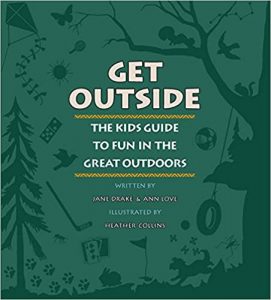 Get outside: The kids guide to fun in the great outdoors
Get outside: The kids guide to fun in the great outdoors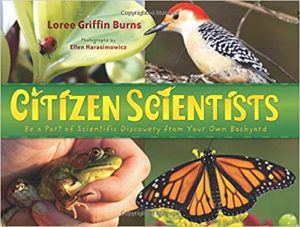 Citizen scientists: Be a part of scientific discovery from your own backyard
Citizen scientists: Be a part of scientific discovery from your own backyard
 Youth strength training: Programs for health, fitness, and sport
Youth strength training: Programs for health, fitness, and sport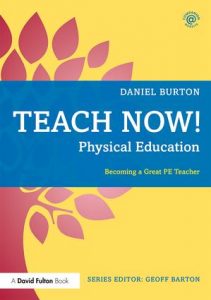 Teach
Teach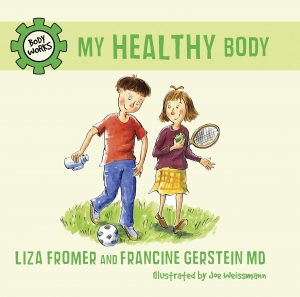 My healthy body
My healthy body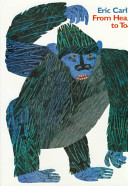 From head to toe
From head to toe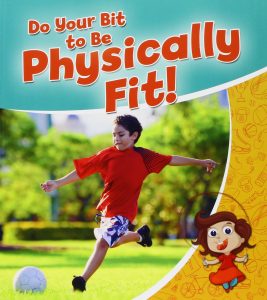 Do your bit to be physically fit!
Do your bit to be physically fit!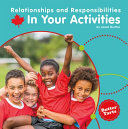 In your activities
In your activities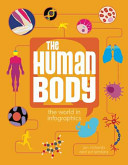 The human body
The human body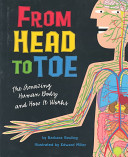 From head to toe: The amazing human body and how it works
From head to toe: The amazing human body and how it works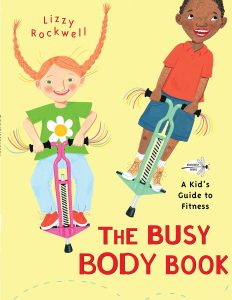 The busy body book: A kid’s guide to fitness
The busy body book: A kid’s guide to fitness
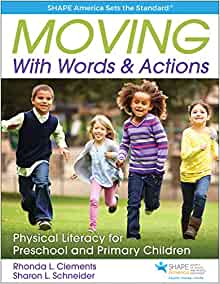 Moving with words & actions: Physical literacy for preschool and primary children
Moving with words & actions: Physical literacy for preschool and primary children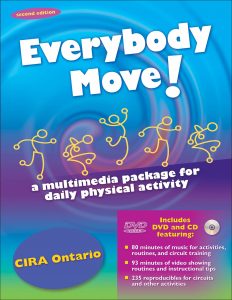 Everybody move!: A multimedia package for daily physical activity
Everybody move!: A multimedia package for daily physical activity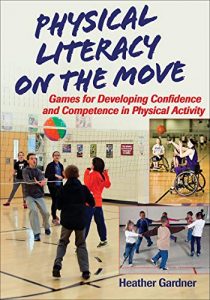 Physical literacy on the move: Games for developing confidence and competence in physical activity
Physical literacy on the move: Games for developing confidence and competence in physical activity Gymtherapy: Developing emotional wellbeing and resilience in children through the medium of movement
Gymtherapy: Developing emotional wellbeing and resilience in children through the medium of movement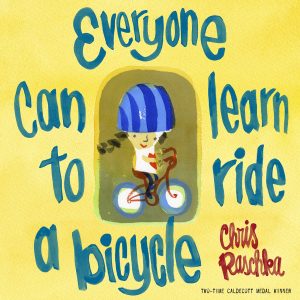 Everyone can learn to ride a bicycle
Everyone can learn to ride a bicycle Hiking day
Hiking day
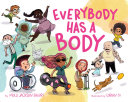 Everybody has a body
Everybody has a body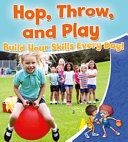 Hop, throw, and play: Build your skills every day!
Hop, throw, and play: Build your skills every day!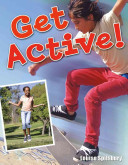 Get active!
Get active!